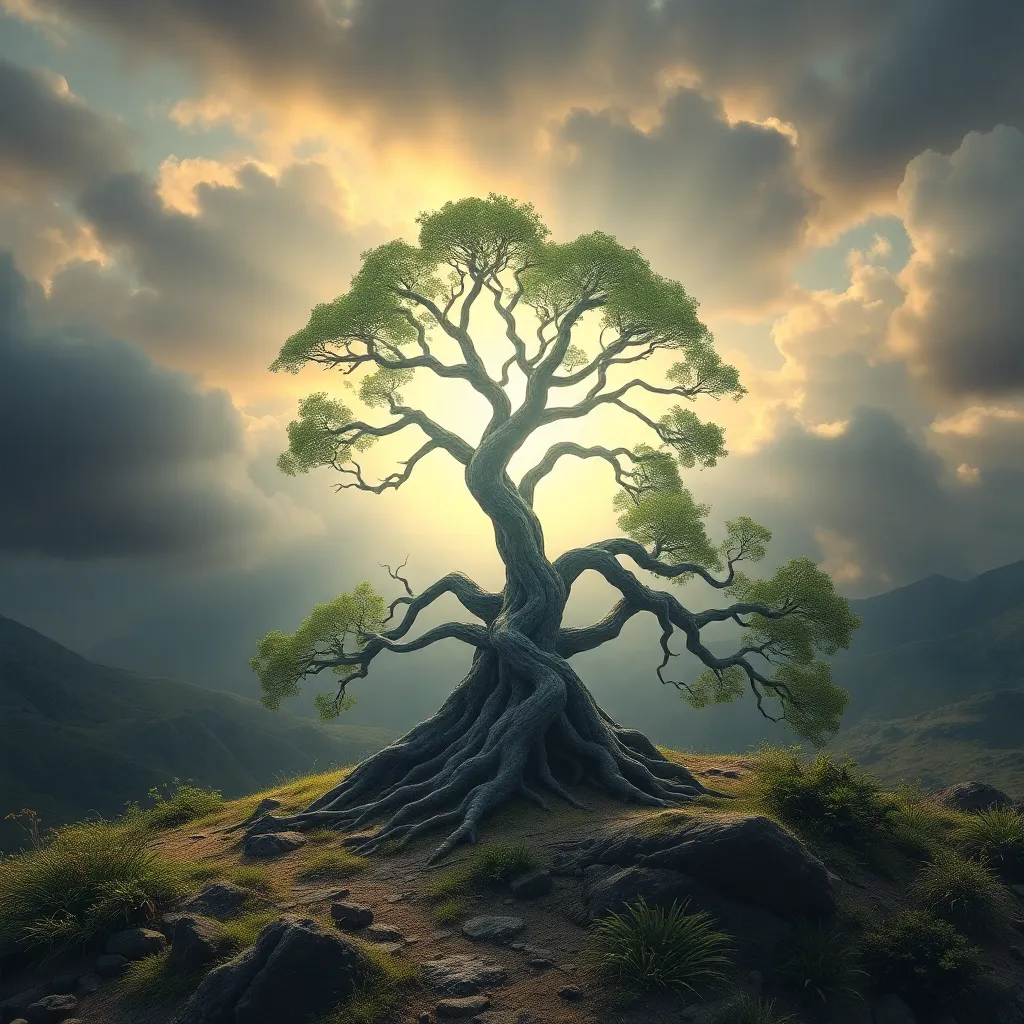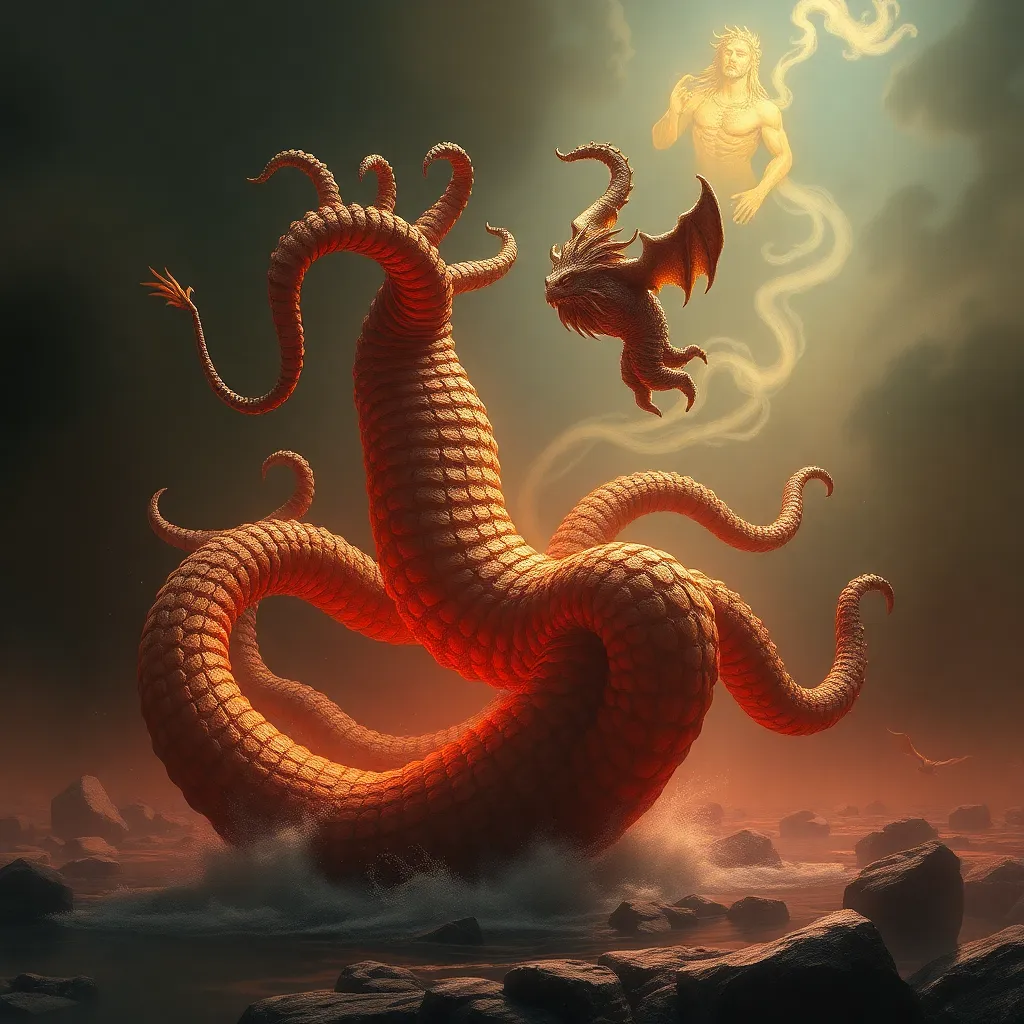The Legacy of Cultural Heroes: Myths That Changed the World
I. Introduction
Cultural heroes are figures who embody the ideals, values, and aspirations of a society, often serving as symbols of hope, strength, and resilience. These heroes can be historical figures, mythological characters, or even fictional creations that resonate deeply within the collective consciousness of a community. Their significance lies in their ability to inspire individuals and societies to strive for greatness and to navigate challenges.
Myths play a pivotal role in shaping societies, providing narratives that explain the world, establish moral codes, and foster a sense of identity. Through the stories of cultural heroes, myths convey essential truths about human experience and the complexities of life. This article aims to explore key cultural heroes throughout history and their enduring legacies, examining how they have influenced societies and continue to resonate today.
II. The Concept of Cultural Heroes
A. Characteristics of Cultural Heroes Across Different Civilizations
Cultural heroes share several characteristics, including:
- Exemplary Traits: They often possess qualities such as bravery, wisdom, compassion, and strength.
- Transformation: Many undergo significant personal growth, overcoming challenges and obstacles.
- Relatability: Despite their extraordinary abilities, cultural heroes often reflect the struggles and aspirations of ordinary people.
B. The Psychological and Social Functions of Myths
Myths serve crucial psychological and social functions, such as:
- Providing frameworks for understanding complex realities.
- Offering models of behavior and ethical guidelines.
- Fostering social cohesion and a shared sense of identity.
C. How Cultural Heroes Reflect the Values and Beliefs of Their Societies
Cultural heroes often mirror the prevailing values and beliefs of their societies. For instance, a hero celebrated for their bravery may reflect a society that values courage in the face of adversity, while a hero known for their wisdom may embody the importance of knowledge and learning. By examining these heroes, we gain insights into the cultural fabric of the communities that revere them.
III. Ancient Myths and Their Cultural Heroes
A. Greek Mythology: Heroes like Hercules and Odysseus
In ancient Greece, heroes such as Hercules and Odysseus exemplified the ideal traits of strength and cunning. Hercules, known for his incredible feats, represented the struggle against overwhelming odds, while Odysseus’s journey home from the Trojan War illustrated the importance of intelligence and perseverance. Their stories continue to influence literature and art, symbolizing the human spirit’s resilience.
B. Norse Mythology: The Legacy of Odin and Thor
Norse mythology features gods and heroes like Odin, the all-father, and Thor, the god of thunder. Odin embodies wisdom and sacrifice, often seeking knowledge at great personal cost. Thor, on the other hand, symbolizes strength and protection, defending humanity against chaos. Together, they reflect the Norse values of courage and honor in the face of existential threats.
C. Indigenous Myths: Figures like Coyote and Spider Woman
Indigenous cultures across North America have rich mythologies featuring figures like Coyote and Spider Woman. Coyote often represents the trickster archetype, teaching lessons through humor and folly, while Spider Woman embodies creation and interconnectedness. These heroes provide essential moral and ethical teachings, emphasizing the importance of balance and respect for nature.
IV. Cultural Heroes in Religion
A. The Role of Saints and Prophets in Various Faiths
In many religious traditions, figures such as saints and prophets serve as cultural heroes. For example, in Christianity, saints like St. Francis of Assisi exemplify compassion and humility, inspiring followers to lead lives of service. Similarly, prophets in Judaism and Islam, such as Moses and Muhammad, embody moral leadership and spiritual guidance.
B. Mythical Figures in Religious Texts and Their Impact on Followers
Religious texts often contain mythical figures whose stories shape the beliefs and practices of their followers. These figures are not merely historical characters but are also seen as embodiments of divine principles, offering lessons and guidance that resonate across generations.
C. Intersection of Myth and Morality: Lessons from Religious Heroes
The stories of religious heroes often intersect with moral teachings, emphasizing values such as forgiveness, justice, and sacrifice. These narratives encourage individuals to aspire to higher moral standards, fostering a sense of community and shared purpose among believers.
V. The Impact of Cultural Heroes on National Identity
A. Historical Figures as Cultural Heroes (e.g., George Washington, Mahatma Gandhi)
Historical figures often emerge as cultural heroes who shape national identity. Leaders like George Washington and Mahatma Gandhi embody the ideals of freedom and non-violence, inspiring movements for independence and justice. Their legacies continue to influence contemporary discussions about leadership and civic responsibility.
B. Myths That Foster Nationalism and Unity
Myths surrounding cultural heroes can foster nationalism and unity within a society. Stories of shared struggles and triumphs create a collective memory that strengthens social bonds and reinforces national identity.
C. How These Heroes Shape Collective Memory and Identity
The narratives surrounding cultural heroes contribute to the collective memory of a society, shaping how individuals view their history and identity. This shared understanding can unite people, promoting a sense of belonging and purpose.
VI. The Evolution of Cultural Myths in Modern Society
A. The Role of Media and Technology in Myth-Making
In contemporary society, media and technology play a significant role in the creation and dissemination of cultural myths. The rise of film, television, and social media has transformed how heroes are portrayed, allowing for new narratives to emerge that reflect current societal values.
B. Contemporary Cultural Heroes: Icons of Pop Culture (e.g., Superheroes, Activists)
Modern cultural heroes often manifest as pop culture icons, such as superheroes like Spider-Man and activists like Malala Yousafzai. These figures resonate with audiences by addressing contemporary issues and embodying ideals of justice, resilience, and hope.
C. The Influence of Globalization on Cultural Narratives
Globalization has led to the blending of cultural narratives, allowing heroes from different traditions to gain prominence worldwide. This cross-cultural exchange enriches the collective understanding of heroism, showcasing diverse perspectives and values.
VII. The Psychological Appeal of Cultural Heroes
A. The Archetypal Hero’s Journey: Joseph Campbell’s Monomyth
Joseph Campbell’s concept of the monomyth, or the hero’s journey, outlines a universal pattern found in many myths. This framework illustrates the stages heroes go through, from their call to adventure to their ultimate return, providing a powerful narrative that resonates with audiences across cultures.
B. The Emotional Resonance of Cultural Heroes in Personal Narratives
Cultural heroes often evoke strong emotional responses, allowing individuals to connect their personal narratives with larger stories of struggle and triumph. This connection fosters a sense of belonging and inspires individuals to overcome their own challenges.
C. How Myths Inspire Resilience and Hope in Individuals and Communities
Myths featuring cultural heroes serve as sources of inspiration, encouraging resilience and hope. By seeing how heroes navigate adversity, individuals and communities can draw strength from these narratives, fostering a collective spirit of perseverance.
VIII. Critiques of Cultural Heroes and Myths
A. The Danger of Idealization and Oversimplification
While cultural heroes can inspire, there is a danger in idealizing them or oversimplifying their stories. Such portrayals can create unrealistic expectations and overlook the complexities of human experience.
B. Myths That Perpetuate Stereotypes or Social Injustices
Some cultural myths may perpetuate harmful stereotypes or social injustices, reinforcing negative perceptions of certain groups. It is essential to critically engage with these narratives to promote more inclusive and equitable representations.
C. The Importance of Critical Engagement with Cultural Narratives
Engaging critically with cultural narratives allows societies to recognize their limitations and biases. This awareness fosters a more nuanced understanding of heroism and encourages the development of more diverse and representative myths.
IX. The Future of Cultural Heroes
A. Emerging Heroes in the Age of Social Media and Activism
As society evolves, new heroes are emerging, particularly in the realms of social media and activism. Figures who advocate



